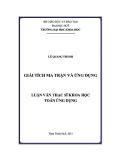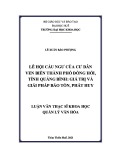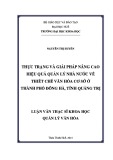Tài liệu Thư viện số
- Đề tài NCKH (896)
- Luận văn thạc sĩ (4161)
- Luận án tiến sĩ (205)
- Lý luận chính trị (354)
- Lịch sử (760)
- Ngữ văn (817)
- Quản lý nhà nước (223)
- Báo chí - Truyền thông (410)
-
Sinh học (752)
- Hóa học (730)
- Toán học (892)
- Vật lý (717)
- Đông phương học (160)
- Môi trường (943)
- Công nghệ thông tin (860)
- Điện tử viễn thông (598)
- Kiến trúc (324)
- Địa lý - Địa chất (880)
- Công tác xã hội - Xã hội học (726)
- Tài liệu tham khảo khác (443)
Danh mục TaiLieu.VN
- Mẫu Slide Powerpoint
- Luận Văn - Báo Cáo (346704)
- Kinh Doanh Marketing (67778)
- Kinh Tế - Quản Lý (50036)
- Tài Chính - Ngân Hàng (57809)
- Công Nghệ Thông Tin (143292)
- Tiếng Anh - Ngoại Ngữ (47261)
- Kỹ Thuật - Công Nghệ (137309)
- Khoa Học Tự Nhiên (110530)
- Khoa Học Xã Hội (85272)
- Văn Hoá - Nghệ Thuật (54491)
- Y Tế - Sức Khoẻ (177214)
- Nông - Lâm - Ngư (63475)
- Kỹ Năng Mềm (29084)
- Biểu Mẫu - Văn Bản (27862)
- Giải Trí - Thư Giãn (52535)
- Văn Bản Luật (199483)
- Tài Liệu Phổ Thông (409665)
- Trắc Nghiệm Online (213578)
- Trắc Nghiệm MBTI
- Trắc Nghiệm Holland
Tài liệu nổi bật
Đăng nhập
Bộ sưu tập nổi bật






